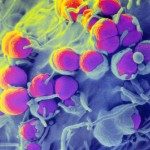Link to Pubmed [PMID] – 8648115
J. Immunol. 1996 Jun;156(12):4697-706
Exogenous Ags enter the endosomal pathway and are presented to CD4+ T cells in association with class II molecules whereas endogenously synthesized Ags, such as viral proteins, are presented to CD8+ T cells in association with MHC class I molecules. Therefore, most CTL activation strategies use live vectors although an alternative possibility could be to deliver the epitope into the cytosol by targeting it to an invasive nonreplicative vector. The adenylate cyclase toxin of Bordetella pertussis is able to invade a large number of eukaryotic cells and to deliver its catalytic domain to the cytosol of the cells. In the present study, we have tested the in vivo immunogenicity of recombinant adenylate cyclase toxins expressing CTL epitopes either from the nucleoprotein of lymphocytic choriomeningitis virus or from the V3 region of HIV-1 gp120. BALB/c mice immunized with these toxins developed high specific CTL responses that were shown to be mediated by class I-restricted CD8+ CTL. The induction of CTL responses by recombinant toxins did not require CD4+ T cells and the cytotoxic activity persisted 2 mo after immunization. The activation of CTL responses by the recombinant adenylate cyclase toxin required the full-length invasive activity of the toxin but did not depend upon its catalytic adenylate cyclase activity as demonstrated with a genetically inactivated recombinant toxin expressing the lymphocytic choriomeningitis virus epitope. This genetically detoxified invasive toxin represents, therefore, an attractive new vector for CTL activation.
